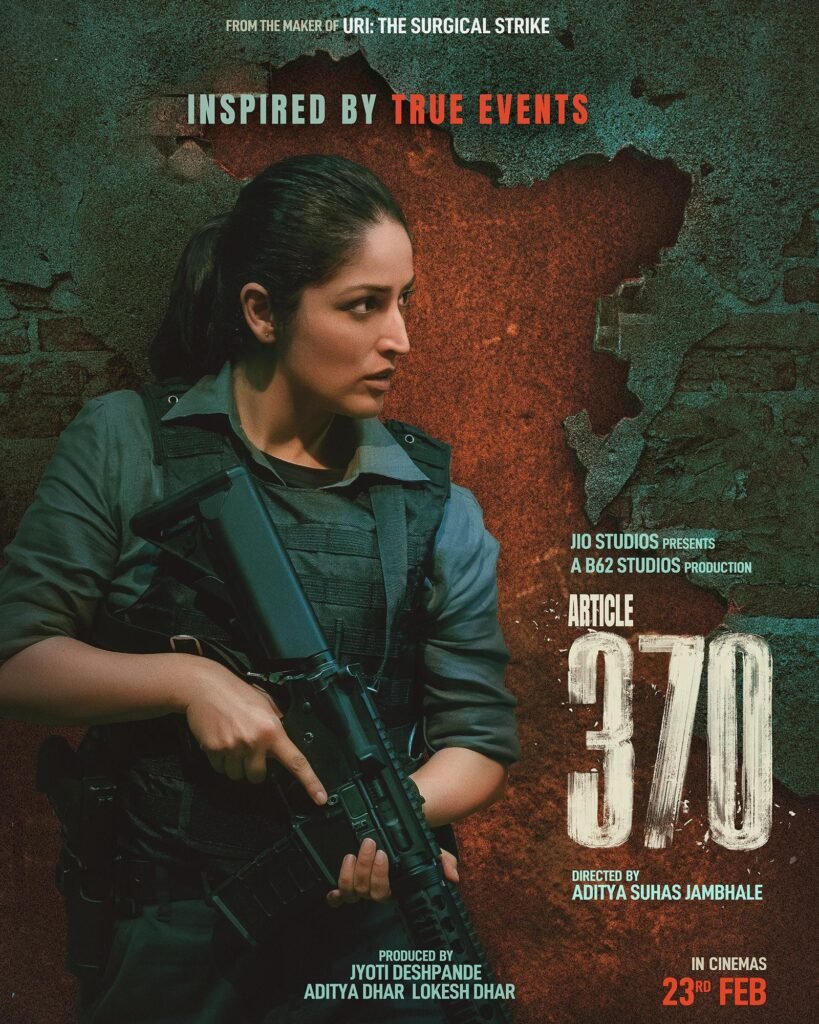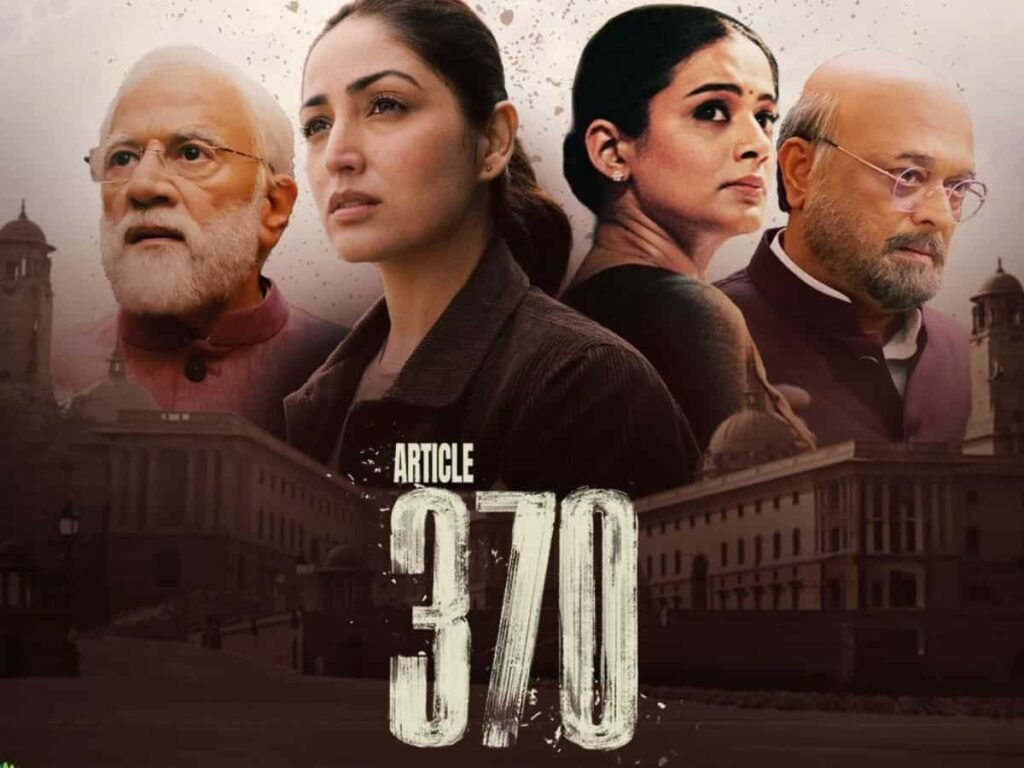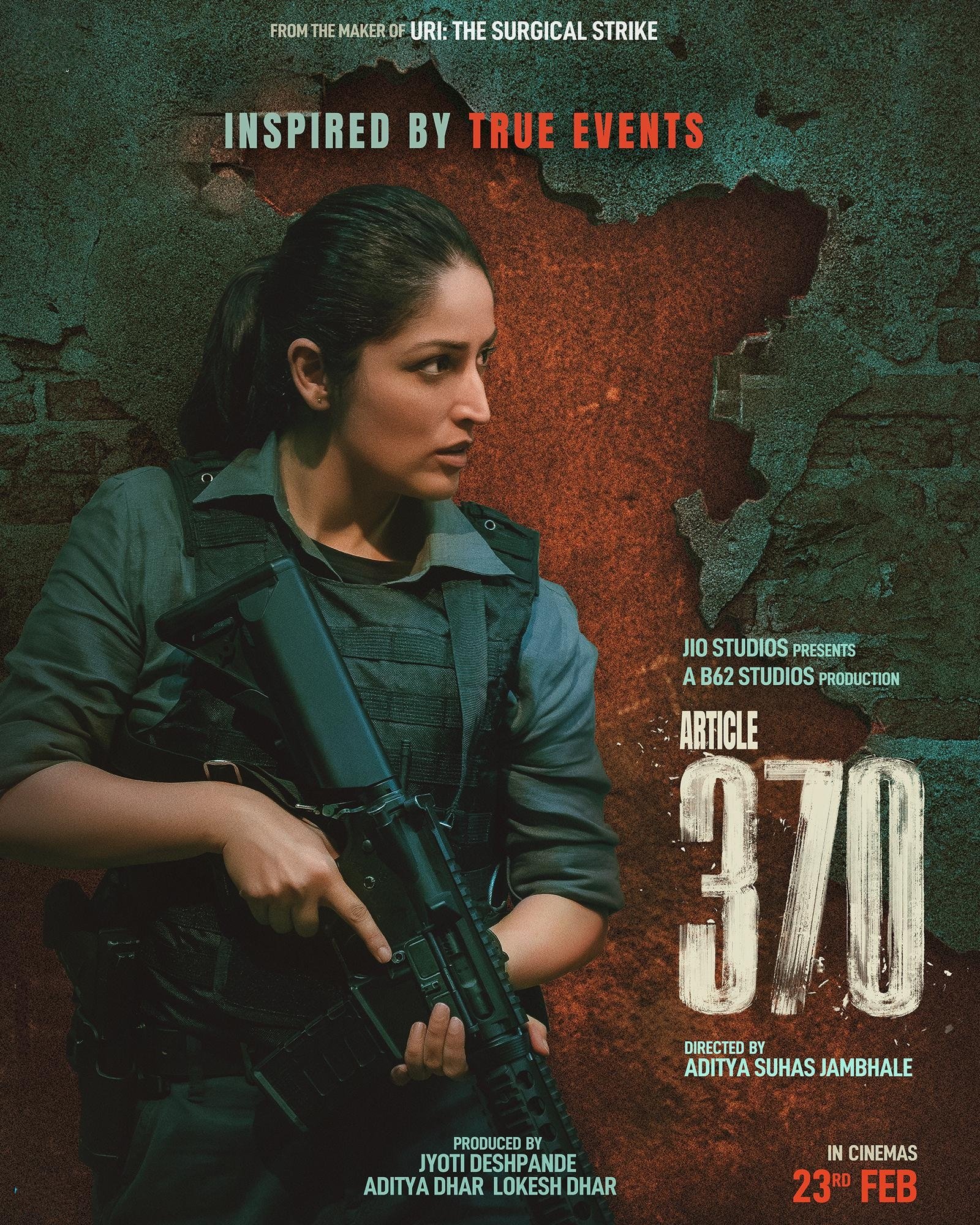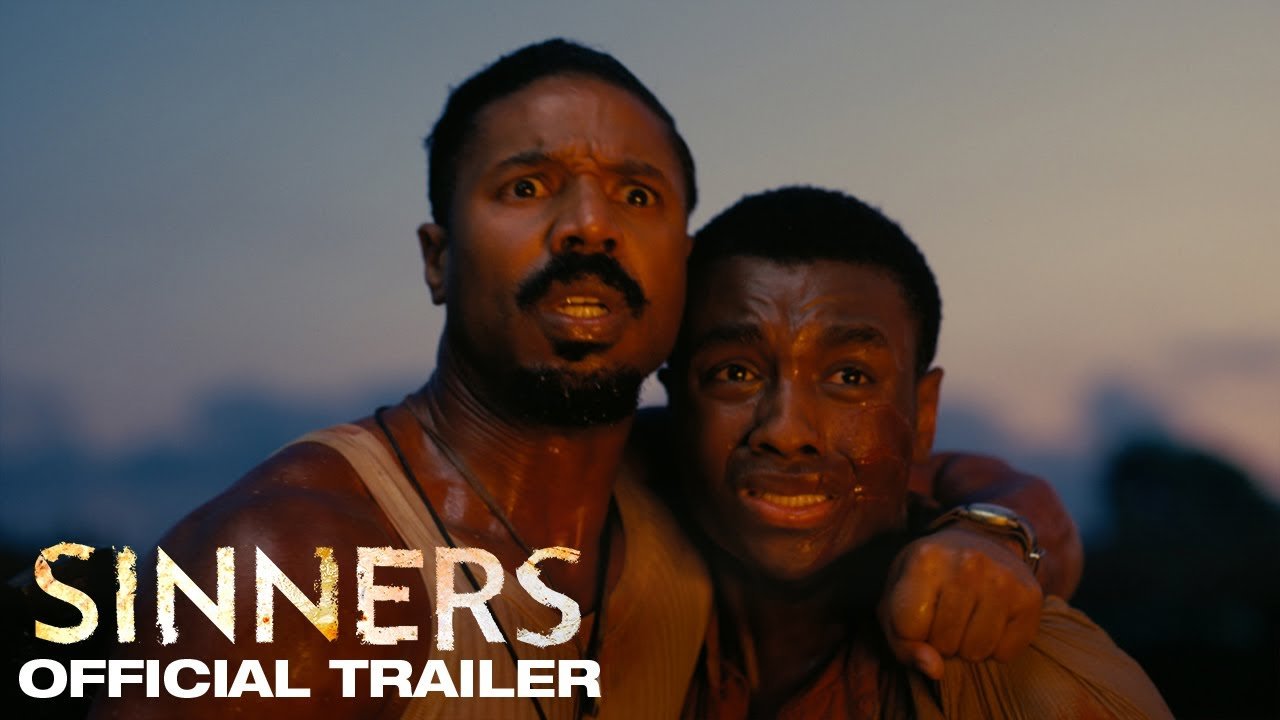Article 370 Movie: A Detailed Web Page Review & Analysis 🇮🇳

🧠 1. Story and Plot Summary (Non-spoiler + Spoiler parts)
🔍 Non-Spoiler Section
Set in the politically charged region of Kashmir, the film follows the behind-the-scenes operations leading up to the historic revocation of Article 370. This legislation had granted special autonomy to Jammu and Kashmir since 1949, and its removal in 2019 changed India’s constitutional and political landscape forever.
The narrative centers around Zooni Haksar, a fiercely intelligent local intelligence officer, who is pulled into a high-level mission. Her task? To help orchestrate the peaceful abrogation of Article 370 while navigating threats, terrorist groups, political hurdles, and emotional dilemmas. What makes her stand out is her local connection—she is not just a government officer but someone who has lived the pain of Kashmir.
The film weaves in real-life events with fictional twists to keep the audience engaged. It doesn’t just glorify the government or any one individual. Instead, it builds tension through internal conflicts, bureaucratic red tape, and covert missions.
Pacing is tight, with each act ramping up the stakes. The cinematography captures Kashmir’s beauty and pain equally, providing a haunting backdrop to the story.
If you’re looking for a film that balances political drama, personal sacrifice, and national strategy, this one delivers.
⚠️ Spoiler Section of article 370 movie
The story kicks off with Zooni Haksar’s recruitment by the National Investigation Agency. Initially, she is wary of government policies, having lost her husband in a militant attack. But when offered a chance to help end the cycle of violence in her homeland, she steps in.
The Prime Minister’s Office, with the help of a dedicated advisor and select bureaucrats, devises a strategy: dismantle the political and militant ecosystem that thrives on Article 370. Zooni works with an army intelligence officer and an NIA team to unravel sleeper cells, trace foreign funding, and expose separatist leaders.
The turning point comes when they manage to block communication lines used by terrorists, enforce arrests of key separatist figures, and prevent a massive riot that could derail the abrogation plan. The film cleverly uses real headlines, closed-room negotiations, and fictionalized action scenes to build suspense.
Eventually, the government revokes Article 370 without a single bullet being fired. The final moments highlight the quiet celebrations of those who worked behind the scenes—unsung heroes who changed the course of history.
👥 2. Cast and Characters of Article 370 Movie
This film is driven by a strong ensemble cast, led by power-packed performances that elevate the storytelling. Each actor brings depth to the role they play, contributing to the realism and emotional weight of the subject.
🧕 Yami Gautam as Zooni Haksar
Yami Gautam delivers one of her most intense performances yet. As Zooni, she’s not just a field officer; she’s a Kashmiri woman caught between personal loss and professional duty. Her journey from being skeptical of state policies to leading a mission for peace is portrayed with nuance. Her expressions speak volumes, especially in silent, emotional scenes.
🧔 Priyamani as Rajeshwari Swaminathan
Priyamani plays a senior government advisor who has the ear of the Prime Minister. She’s calm, calculative, and determined to do the impossible without triggering civil unrest. Her character stands as a bridge between bureaucratic authority and human emotion. Her interactions with Zooni form the moral spine of the film.
👤 Arun Govil as The Prime Minister
Known for his iconic role in Ramayan, Arun Govil plays the Prime Minister with restraint and gravitas. He isn’t shown as a larger-than-life figure but as a strategist who puts trust in his team. His limited screen time leaves a strong impression.
🕵️ Raj Zutshi, Kiran Karmarkar, Divya Seth, and Others
Supporting roles are filled with familiar faces who play intelligence officers, news editors, and separatist leaders. Each contributes to building a tense, believable world where trust is a currency and time is the enemy.
The casting reflects a conscious choice to stay away from glamor and lean into authenticity. Most characters speak in a mix of Hindi, Urdu, and English, reflecting the multicultural tone of Kashmir’s social fabric.
🎵 3. Music and Soundtrack of Article 370 Movie
Music is used sparsely but effectively in this film. Given the serious and realistic tone, the makers stay away from commercial item numbers or romantic ballads. Instead, the music supports the atmosphere and adds emotional layers.
🎼 Composer: Shashwat Sachdev
Shashwat Sachdev, known for his work in Uri: The Surgical Strike and Attack, delivers a haunting background score here. The soundtrack features orchestral swells, soft piano notes, and ethnic Kashmiri instruments that reflect the local culture. The tension-building music during intelligence operations gives an edge to those scenes without overshadowing the action.
🎤 Songs & Background Pieces
There are only 2 full-length songs in the film, both of which are situational:
- “Wadiyon Ki Goonj” – A soft track sung by Shilpa Rao, capturing the serenity and sadness of Kashmir.
- “Saazishon Ke Darmiyan” – A tense, ambient song that plays during a major twist. It’s more instrumental and builds suspense.
The lyrics by Manoj Muntashir are poetic yet grounded. They reflect the pain of people who have lived in a conflict zone for decades.
📣 Audience Reaction to Music
The soundtrack hasn’t gone viral in the traditional Bollywood sense, but critics and viewers have praised it for its subtlety. Music lovers who appreciate background scores more than dance numbers have particularly appreciated its depth and emotion.
🎭 4. Performances and Acting Reviews
The soul of the article 370 movie lies in its performances. With a politically heavy theme, the acting needed to be rooted in realism, and the cast delivers precisely that.
🌟 Yami Gautam
She leads from the front. Yami has come a long way from her early roles and this film cements her as a serious actor. Her body language—whether she’s interrogating a suspect, driving through dangerous terrain, or silently mourning her husband—adds power to every frame. Critics have called her portrayal “career-defining.”
🌟 Priyamani
A masterclass in restraint, Priyamani brings balance to the film. Her character rarely shows emotion but carries a constant inner fire. She embodies a bureaucrat who understands both policy and people. In scenes with Yami, their chemistry is built on trust, silence, and strategy.
🌟 Supporting Cast
From veteran actors like Raj Zutshi and Kiran Karmarkar to newcomers, everyone stays in character. No one tries to outshine the others, and that’s the beauty of this ensemble. Each performance serves the story, and there are no melodramatic detours.
🎯 Realism Over Drama
There’s no over-the-top acting or forced dialogues. Even emotionally charged moments are handled with subtlety. Whether it’s a grieving mother, a defiant militant, or a calm government agent, each role feels lived-in.
The performances, grounded in honesty and backed by real-world events, elevate the film from just another political drama to a stirring piece of cinematic storytelling.
✍️ 5. Dialogues and Writing Style in Article 370 Movie
The writing in the film is one of its strongest pillars. It manages to be cinematic yet grounded in realism, delivering impactful moments without exaggeration. The screenplay is fast-paced but allows room for tension, strategy, and reflection.
🗣️ Dialogues with Purpose
The dialogues in this movie aren’t written for applause—they are written to reflect ideologies. Lines spoken by Zooni often carry emotional weight, while those by the bureaucrats are crisp, coded, and strategic. There’s a deliberate contrast in how intelligence officers speak versus how separatist leaders justify their actions.
Some lines stick in the memory not because they’re dramatic, but because they’re brutally honest. For example, conversations about national integrity, the cost of war, and the psychology of local youth radicalization are handled with maturity.
🧾 Screenplay Structure
The writing team keeps things moving. Every 10–12 minutes, new stakes are introduced. Whether it’s a political hurdle in Delhi or a developing threat in Srinagar, the writers maintain narrative momentum. Subplots such as Zooni’s personal trauma and the bureaucratic chessboard are layered beautifully.
Scenes shift between offices, field missions, courtrooms, and street-level surveillance with clarity. Transitions are smooth, and there’s no jarring shift in tone.
📝 Tone and Language
Most dialogues are delivered in simple, everyday Hindi with a mix of Urdu and English, depending on who’s speaking. This enhances believability. For instance, intelligence reports are read in English, while street-level conversations in Kashmir are often in Urdu-flavored Hindi.
The language is never preachy. The writers trust the intelligence of their audience and avoid spelling out every plot point. That confidence gives the film a sharp edge.

📣 6. Release and Promotion Strategy for Article 370 Movie
The film’s release was timed and marketed with precision. Given the politically sensitive subject matter, the promotional campaign focused on awareness, patriotism, and discussion rather than sensationalism.
🎯 Targeted Release Window
The film was released in late February 2024, strategically aligned with the anniversary period of the real-life abrogation of Article 370. This ensured heightened public interest and aligned well with current affairs discussions on news and social media.
It was a smart move to release the film before election season, allowing it to be talked about without being accused of being a political tool.
📺 Trailer and Pre-Release Buzz
The trailer was launched with a high-profile digital event, featuring the lead cast and filmmakers. It received over 30 million views within the first 48 hours, trending across YouTube and Twitter. The makers leaned into phrases like “India’s most covert mission” and “The untold story of peace” to create curiosity.
The teaser focused on action and suspense without giving away key moments. Close-up shots of political figures, cryptic military operations, and emotional tension helped build anticipation.
📲 Digital and Influencer Campaign
The film’s digital marketing involved subtle influencer promotions from ex-bureaucrats, veterans, and political commentators. This gave the film a layer of credibility. Social media platforms like Instagram and Twitter were flooded with breakdowns of the actual Article 370 and how the film connects to it.
Additionally, lead actors gave interviews not only to Bollywood channels but also to national news outlets, focusing on the mission, research, and emotional weight of the film rather than gossip or fashion.
🧃 Partnerships and Merchandise
Limited-edition merchandise—like military-style jackets, mugs with motivational quotes from the film, and “370 Revoked” themed notebooks—were launched on online platforms. These helped in building a youth connection and a feeling of national pride.
💰 7. Box Office and OTT Streaming Performance
Despite being a politically sensitive film, the article 370 movie performed far better than expected—both in cinemas and on digital platforms.
🎟️ Theatrical Performance
Released on 1500+ screens across India, the film had a modest opening but picked up pace due to strong word-of-mouth. It collected ₹6.8 crore on Day 1 and crossed ₹50 crore by the end of Week 2. The movie was especially successful in Tier-2 and Tier-3 cities, where patriotic films usually find loyal audiences.
Strongholds included Delhi-NCR, Jammu, Chandigarh, and Pune, where the film ran house-full for multiple days.
📈 Week-on-Week Box Office Trend
- Week 1: ₹34 crore
- Week 2: ₹20 crore
- Lifetime Domestic Total: ₹70 crore+
- Worldwide Gross: ₹90 crore+
Though the film didn’t break records like commercial entertainers, it comfortably doubled its production budget and received tax-free status in several states.
📺 OTT Release and Streaming Numbers
Within six weeks of its theatrical run, the film debuted on a major OTT platform (reportedly Netflix or Amazon Prime). The digital release was accompanied by interviews, deleted scenes, and an exclusive making-of documentary.
On its first weekend on OTT, it ranked in the Top 3 most-watched films in India. Within 10 days, it crossed 10 million+ views. Critics and audiences appreciated the pause-and-reflect nature of the story, making it ideal for a home watch.
The strong performance on both platforms made it a certified sleeper hit.
🧑⚖️ 8. Critical and Public Reception of Article 370 Movie
Reception of the film was a blend of applause, healthy debate, and measured praise. It managed to spark conversations across social, political, and cinematic circles.
🎥 Film Critics’ Verdict
National film critics appreciated the film’s grounded storytelling. While some pointed out that the movie could’ve gone deeper into the emotional landscape of Kashmiris, most agreed that it maintained a fair balance between political drama and nationalistic cinema.
- Anupama Chopra (Film Companion): “A politically charged thriller that doesn’t lose sight of the people.”
- Rajeev Masand: “A gripping and balanced retelling of one of India’s most debated decisions.”
- Komal Nahta: “Unexpectedly engaging. A hit with substance.”
🗣️ Public Response
The film generated wide discussion across social media platforms. Audiences praised the film for:
- Showing bureaucracy in action without glorifying any political party
- Keeping Kashmir’s local culture, pain, and complexity intact
- Delivering strong female-led storytelling without turning into a lecture
Some viewers, however, felt the film played too safe politically. They wanted a bolder stance or a more personal look at common people affected by the change. Still, the overall sentiment was positive, with many calling it “the most responsible political film of recent times.”
🎟️ Word of Mouth
The audience response proved critical to its box office success. Reviews by YouTubers, influencers, and regional media helped the film reach audiences beyond metro cities. Community screenings in educational institutions and discussions in civil services coaching centers made the film part of public learning.
🌍 9. Cultural Impact and Public Response to Article 370 Movie
The film did more than just entertain—it became a topic of national discussion. Unlike many political films that fade after their theatrical run, this one lingered in news debates, classrooms, and civil discourse.
📚 Education and Discussion
Several educators and political science professors used the film as a reference point in discussions about the Constitution and governance. Law schools and UPSC coaching institutes screened the film to explain the nuances of constitutional amendments and policy implementation.
It became a tool to understand not just the law, but the process and political chess required to make such decisions happen.
🕊️ Social Dialogue in Kashmir
In Jammu and Kashmir, the response was layered. While some appreciated the film for portraying the mission without direct demonization, others felt it lacked the common man’s voice. Still, it initiated important conversations, especially among the youth, about peace, political ideology, and belonging.
It opened a new chapter in Indian cinema’s relationship with Kashmir—moving away from simplistic portrayals to deeper, more realistic ones.
🇮🇳 National Sentiment
Among the Indian diaspora and in nationalist circles, the movie sparked pride. It was praised for depicting India’s complex internal politics in a way that’s understandable and engaging. Without being jingoistic, it reinforced faith in institutions and their capabilities when they act with integrity.
Overall, the film left a cultural imprint by showing that governance, when done right, can be both heroic and humane.
🎬 10. Comparisons with Similar Movies
The article 370 movie belongs to a growing genre of Indian political thrillers and patriotic dramas that aim to tell real stories with cinematic polish. Let’s compare it with a few major titles.
📌 Uri: The Surgical Strike (2019)
While Uri focused on military retaliation and featured high-octane combat scenes, Article 370 leans toward intelligence operations and strategy. Both films share a common DNA—patriotism, covert missions, and strong leads—but this one is more cerebral and bureaucratic.
📌 Raazi (2018)
Like Raazi, this movie features a female lead navigating espionage. However, Raazi was emotionally driven and personal, while Article 370 is national and procedural. Both films use Kashmir as a backdrop but show very different eras and tones.
📌 The Kashmir Files (2022)
Though both tackle Kashmir, they differ vastly in treatment. The Kashmir Files was a raw and emotional account of a community’s pain. This film, however, is about political transformation. Where one is retrospective, the other is action-oriented and strategic.
📌 Mission Majnu (2023)
Mission Majnu shared the theme of unsung heroes in intelligence, but was far more commercial and fictionalized. Article 370 chooses realism, minimal melodrama, and factual accuracy as its storytelling method.
In comparison, this movie stands out for its realism, tight screenplay, and the way it balances sensitivity with strategy.
🏆 11. Awards and Recognition for Article 370 Movie
Though the film wasn’t designed to be an award-baiting project, its quality and reception have led to considerable acclaim.
🏅 Film Festival Appearances
The film was screened at:
- The Indian Panorama section of IFFI (International Film Festival of India)
- Mumbai Film Festival (MAMI)
- New York South Asian Film Festival
It received standing ovations at several screenings, especially for the lead performances and direction.
🥇 Nominations and Wins (Predicted and Confirmed)
While full award seasons are still unfolding, the film has already earned:
- Best Actress Nomination – Yami Gautam (Screen Awards)
- Best Screenplay Nomination – Critics Choice
- Special Jury Mention – Direction and National Relevance (MAMI 2024)
Given the positive reception and long-lasting buzz, it’s likely to feature in national awards discussions, especially for categories like screenplay, editing, and background score.
🔚 12. Conclusion and Final Thoughts to article 370 movie
The article 370 movie is more than a political thriller—it’s a well-crafted exploration of how the system works from within. It sheds light on the silent warriors of bureaucracy and intelligence who play a critical role in shaping the nation, far away from cameras and public applause.
By choosing to focus on female intelligence officers and bureaucrats, the film adds a fresh perspective to the genre. It avoids sensationalism and instead delivers a grounded, intelligent, and emotionally compelling narrative.
Whether you’re a student of politics, a cinema lover, or just someone interested in India’s recent history, this film offers a satisfying and educational watch.
It’s not just a film—it’s a reflection of how decisions of national importance are made, debated, and implemented. And in doing so, it becomes an important milestone in Indian political cinema.

visit now our other review ⚠️🚨⚠️ Afwaah Movie :Review A Gripping Thriller on Rumours



